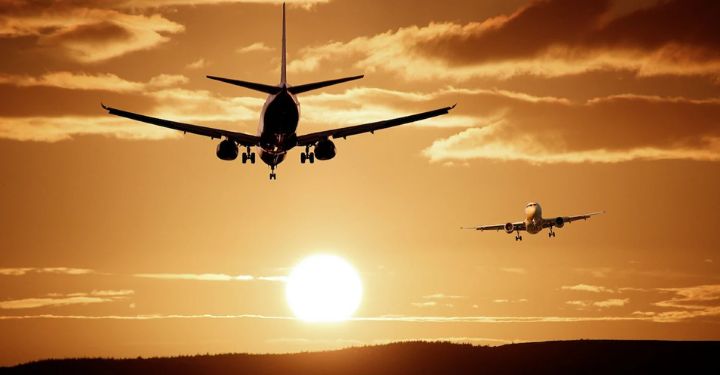In a development signaling renewed engagement between two of Asia’s largest economies, India and China have agreed to resume direct commercial flights starting October 26, 2025. The move ends a five-year suspension that began during the COVID-19 pandemic and extended amid worsening bilateral tensions following military standoffs along their disputed Himalayan border.
The resumption, announced by the Ministry of External Affairs (MEA) of India on October 2, is being hailed as both a practical and symbolic step toward rebuilding normalized ties between the neighbors. While full diplomatic normalcy remains distant, the skies between the two countries are set to open once again—beginning with passenger flights and potentially expanding into greater connectivity over time.
A Pause That Lasted Half a Decade
India and China suspended all direct passenger flights in early 2020 as the COVID-19 pandemic spread globally. However, what was initially a health-related precaution quickly took on geopolitical overtones. Tensions escalated rapidly after the deadly Galwan Valley clash in June 2020, where 20 Indian soldiers and at least four Chinese troops were killed in the worst border violence in decades.
Since then, direct people-to-people exchanges have largely stalled, with students, business travelers, and families forced to take long, indirect flight routes through third countries. The absence of a direct air corridor was symbolic of the wider diplomatic freeze between New Delhi and Beijing.
Though some chartered and special flights were operated during the pandemic under “bubble” agreements, regular direct commercial flights never resumed—until now.
What’s Changing on October 26
According to officials, commercial airlines will now be allowed to operate direct flights between designated cities in India and China from October 26 onward, in accordance with the 2025 winter aviation schedule. The resumption is subject to standard regulatory approvals and operational readiness.
Indian low-cost carrier IndiGo has already announced plans to reintroduce a daily Kolkata–Guangzhou route as part of the renewed agreement. Other airlines, including Air India and possibly Chinese carriers such as China Southern and Air China, may follow, depending on bilateral clearances and commercial demand.
While details are still being finalized, the resumption is expected to start with limited frequencies and expand gradually, especially if passenger traffic is strong and political conditions remain stable.
Why the Move Matters
The decision to reopen air routes is being viewed as a strategic confidence-building measure. Reinstating direct flights allows thousands of Indian students—many of whom were stranded during COVID restrictions and continued their studies remotely—to return to universities in China. It also benefits business travelers, tourists, and diplomatic staff, who had to rely on long-haul connections via Singapore, Bangkok, or Dubai.
Direct connectivity is also expected to boost trade, which—despite the geopolitical tensions—continues to flourish. Bilateral trade between the two nations crossed $135 billion in 2024, making China India’s second-largest trading partner after the U.S.
Opening air routes may also help reduce travel costs, encourage investment, and increase people-to-people engagement, which has been sorely lacking in recent years.
A Calculated Thaw in Relations
While tensions persist, particularly on border issues, the decision to resume flights suggests a subtle shift in both nations’ approach to diplomacy: compartmentalizing disputes while cooperating where possible.
In recent months, India and China have resumed working-level talks on a range of non-political issues, including trade, climate change, and cross-border rivers. There has also been renewed discussion around restarting the Kailash Mansarovar pilgrimage route for Indian citizens, which had been suspended since 2020.
The flight agreement is seen as part of this broader approach—signaling a willingness to rebuild trust incrementally, without requiring a full diplomatic breakthrough.
Challenges Still Remain
Despite the apparent progress, challenges abound. Security concerns, mutual distrust, and political sensitivities could complicate the expansion of the flight schedule. Both governments will be cautious about allowing a rapid surge in connectivity without closely monitoring how the relationship evolves.
Additionally, passenger demand remains uncertain. While pent-up demand is expected initially—particularly from students and business travelers—it’s unclear how sustainable it will be without parallel improvements in diplomatic relations and visa facilitation.
Moreover, operational issues such as ground-handling support, customs clearance, and aviation rights must be ironed out between regulatory bodies and airline partners on both sides.
There are also concerns among strategic analysts that increased connectivity could expose critical sectors—like telecom and logistics—to potential vulnerabilities if not managed transparently and securely.
Industry and Public Reaction
The aviation and tourism industries have largely welcomed the decision. Travel companies expect an immediate uptick in bookings between metro cities like Delhi, Mumbai, Kolkata, and Chinese urban centers such as Guangzhou, Shanghai, and Beijing.
“I think this is long overdue. Our clients have been asking about India-China direct routes for years now,” said P. Bhattacharya, a regional travel agent in Kolkata. “It’s not just about convenience—it’s about confidence that the two governments are willing to re-engage.”
University students and academics, too, are hopeful. “Many of us have been studying online or stuck in India for years,” said Ananya S., a medical student enrolled at a university in Wuhan. “A direct flight is not just about going back—it’s about picking up where life left off.”
The Road Ahead
The coming months will serve as a litmus test for whether India and China can sustain and expand this renewed connectivity. Much will depend on the geopolitical environment, public sentiment, and how both sides handle bilateral irritants—especially border issues.
That said, the resumption of direct flights on October 26 marks a notable departure from the status quo. It shows that while India and China may remain geopolitical competitors, both recognize the value of maintaining essential communication lines.
Journalist Details
Latest entries


